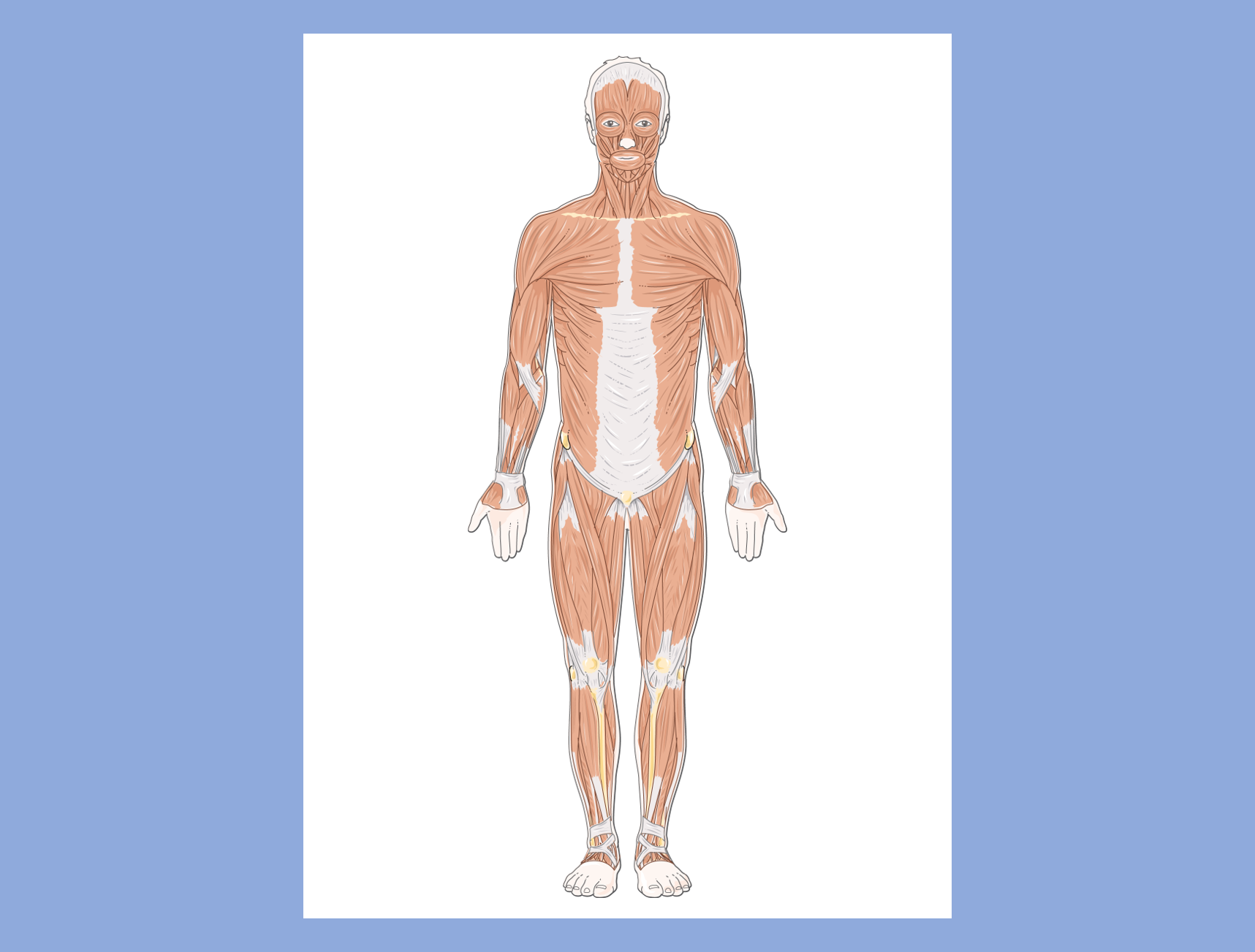Module 11: Muscle Anatomy & Movement
Section outline
-

All muscles fundamentally perform one action: contraction. The consequence of this action may appear in many ways: (1) as gross movements, such as pulling a part of the skeleton in a specific direction; (2) the rhythmic pumping of blood by the heart; or (3) even more minor scale changes to the diameter of tubes, such as the blood vessels, gut, and bronchioles. This module highlights the many types of muscles in the human body, emphasizing skeletal muscle by understanding which muscles move what in the body; a weightlifter can learn to isolate these muscles and train them to grow by performing specific exercises. Moreover, physical therapists and athletic trainers use extensive knowledge of muscles and body movements to develop therapies to help persons heal from injuries.
("Servier - Drawing Superficial muscles anterior view - no labels" by Servier Medical Art is used with a CC BY 4.0 license.)
Upon completion of this module, you will be able to:
- Compare and contrast the three kinds of muscular tissue. (CLO# 1, 2)
- Describe the gross anatomy of the connective tissue layers surrounding skeletal muscle. (CLO# 1)
- Distinguish between the components of the muscle fiber and its fundamental functional unit, the sarcomere. (CLO# 1, 2)
- Relate muscle actions to maintaining homeostasis. (CLO# 3, 4)
- Define the main movements from skeletal muscle actions. (CLO # 1, 4)
- Explain naming conventions used to name muscles. (CLO #1 ,4)
- Identify the major skeletal muscles by regional groups in the body.(CLO# 1, 4)
To achieve these objectives:
- Read the Module 11 Introduction. (CLO #2), (MLO #4)
- Read Chapter 13 in the textbook. (CLO #1, #2, #3, and #4), (MLO #1, #2, #3, and #4)
- Test Your Knowledge sections are located at the end of each segment in the chapter. Answering the questions in these sections will aid in your knowledge to help you with the course. These questions will be relevant for information on testing and quizzes. (CLO #1, #2, #3, and #4), (MLO #1, #2, #3, and #4)
- Complete the exercises in the "Practice" section at the end of the chapter. (CLO #1 and #2), (MLO #1, #2, #3, #5, and #6)
- Complete the discussion activity. (CLO #1 and #2), (MLO #7)
- Complete the case study exercise. (CLO #1, #2, and #4), (MLO #2, #5, and #7)
- Complete the quiz. (CLO #1, #2, #3, and #4), (MLO #1, #2, #3, #4, #5, #6, and #7)
Module Pressbooks Resources and Activities
You will find the following resources and activities in this module at the Pressbooks website. Click on the links below to access or complete each item.
-
Read chapter, review the "Test Your Knowledge" questions, and complete the activities in the "Practice" section at the end of the chapter.
-
This quiz will have 5 questions. It is worth 10 points. You are allowed two attempts at this quiz. Correct answers will be available for review after the quiz is closed.
Directions for Instructors: Load questions from the Module 11 Question Bank.Set close date and then tick "Right answer" box under "After the quiz is closed" section of Review Options.
- Compare and contrast the three kinds of muscular tissue. (CLO# 1, 2)
Background Colour
Font Face
Font Kerning
Font Size
Image Visibility
Letter Spacing
Line Height
Link Highlight
Text Colour
